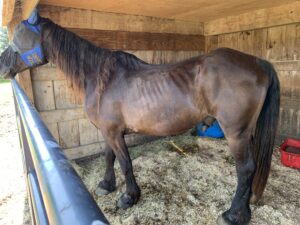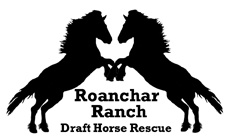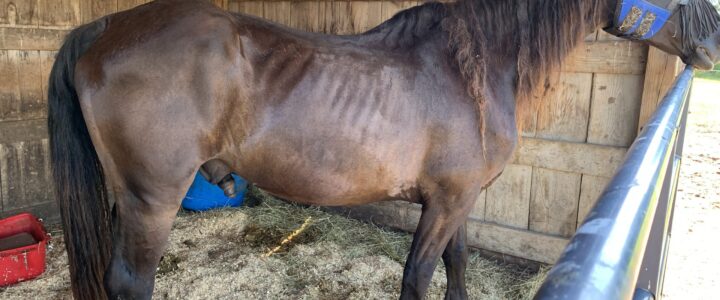Intake Day

Apollo arrived at the facility close to 500 pounds underweight. His physical body showed all the signs of being starved; his hips jutted out, every rib was clearly visible, and his spine protruded out of his back. He was a walking skeleton.
The Road Back
An estimated 20% of emaciated horses die during the refeeding process. The undertaking takes time and patience. The urge to offer as much food as the animal could possibly eat is replaced with the best practice of providing multiple small meals throughout the day. This allows the body to become accustomed again to being nourished. If not done slowly, the shock to the system takes a toll on the liver, kidneys, and heart. Leaving the animal in organ failure.
The meal itself is a balancing act. It can’t contain too much sugar and it can’t contain too much fat. There needs to be an adequate amount of roughage to prime the digestive system.
Complete Transformation
For a moderately emaciated horse to fully return to their ideal weight, it takes 60-90 days. For severely emaciated it takes 6-10 months. The key is for the horse to have 24/7 access to a good pasture or quality after the initial 2-week refeeding adjustment period.
Adequate turnout is also very important so that the horse can rebuild the muscle that was lost from malnourishment.
Any refeeding program should be overseen by a veterinarian so that refeeding syndrome, a metabolic condition affecting horses that are reintroduced to high-nutrient feeds too quickly, can be avoided.
Don’t miss out on the latest news from the ranch! Sign up for our monthly newsletter today.

